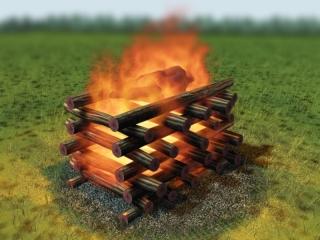| |

|
| |

|
From this page you can:
|
|
|
Low Hauxley: A Bronze Age Burial
In the Bronze Age, the most common form of burial in Northumberland and Durham was in a simple stone cairn. The main
burial was either placed within a stone-lined rectangular pit, known as a cist, or laid in a flexed position on the
ground. In some cases, the body was cremated and the ashes either placed in the cist, or into a vessel that was
buried directly into the ground.
Each of the burials excavated at Low Hauxley lay in a cist. One was an inhumation - with the body in a crouched
position with the head facing north, and the other was a cremation. As was common at this time, both Low Hauxley
burials were accompanied by a small, highly decorated, pottery vessel or beaker, which may have contained food or
drink.
Sometimes other objects - such as flint tools and, more rarely, arrowheads, buttons or jewellery - might also be
placed inside a cist, the latter assumed to belong to a wealthy or powerful person. Other offerings of food may
have accompanied the burial, but this never survives for archaeologists to discover.
|
|
|
 |